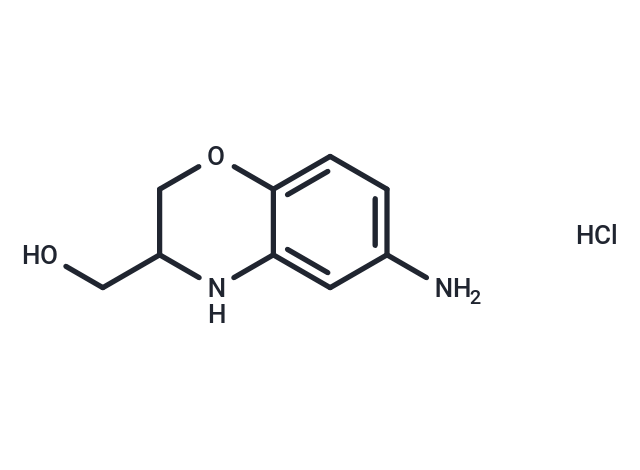- Remove All
 Your shopping cart is currently empty
Your shopping cart is currently empty
ABO hydrochloride
ABO acts as an annexin A7 modulator, specifically binding to Thr286 to inhibit its phosphorylation on threonine (not on serine or tyrosine) residues within human umbilical vein endothelial cells (HUVECs). This compound furthers the annexin A7 interaction with the EF-hand protein GCA, leading to reduced GCA phosphorylation, lowered intracellular calcium levels, and enhanced autophagy in COS-7 cells. Moreover, ABO lessens phosphorylation of the microtubule-associated protein 1 light chain (LC3) in HUVECs and impedes the upregulation of phosphatidylcholine-specific phospholipase C (PC-PLC) due to oxidized low-density lipoprotein in vascular endothelial cells (VECs). In animal models, specifically apoE-/- mice on a Western diet, administration of ABO (50 or 100 mg/kg per day) has been shown to decrease PC-PLC expression, promote autophagy, and reduce apoptosis, lipid accumulation, and the extent of atherosclerotic plaques in the aortic endothelium.

ABO hydrochloride
| Pack Size | Price | Availability | Quantity |
|---|---|---|---|
| 10 mg | Inquiry | 8-10 weeks | |
| 50 mg | Inquiry | 8-10 weeks |
Product Introduction
| Description | ABO acts as an annexin A7 modulator, specifically binding to Thr286 to inhibit its phosphorylation on threonine (not on serine or tyrosine) residues within human umbilical vein endothelial cells (HUVECs). This compound furthers the annexin A7 interaction with the EF-hand protein GCA, leading to reduced GCA phosphorylation, lowered intracellular calcium levels, and enhanced autophagy in COS-7 cells. Moreover, ABO lessens phosphorylation of the microtubule-associated protein 1 light chain (LC3) in HUVECs and impedes the upregulation of phosphatidylcholine-specific phospholipase C (PC-PLC) due to oxidized low-density lipoprotein in vascular endothelial cells (VECs). In animal models, specifically apoE-/- mice on a Western diet, administration of ABO (50 or 100 mg/kg per day) has been shown to decrease PC-PLC expression, promote autophagy, and reduce apoptosis, lipid accumulation, and the extent of atherosclerotic plaques in the aortic endothelium. |
| Molecular Weight | 253.13 |
| Formula | C9H12N2O2?2HCl |
| Cas No. | 2309172-24-3 |
| Storage | Powder: -20°C for 3 years | In solvent: -80°C for 1 year | Shipping with blue ice. |
Calculator
In Vivo Formulation Calculator (Clear solution)
Dose Conversion
Tech Support

Copyright © 2015-2025 TargetMol Chemicals Inc. All Rights Reserved.




